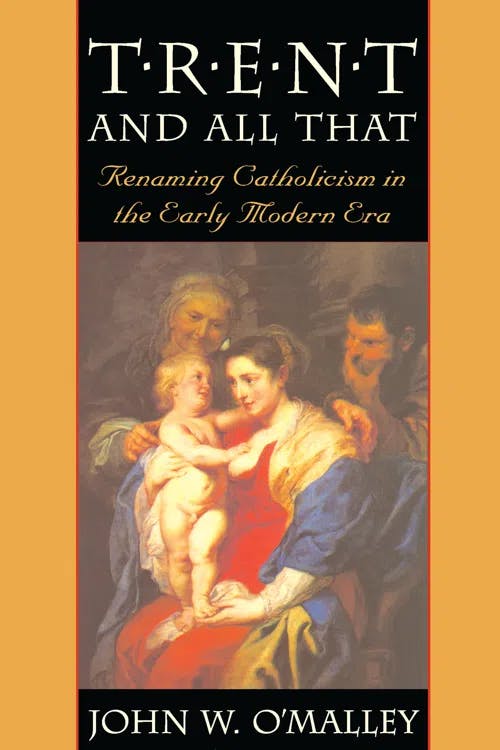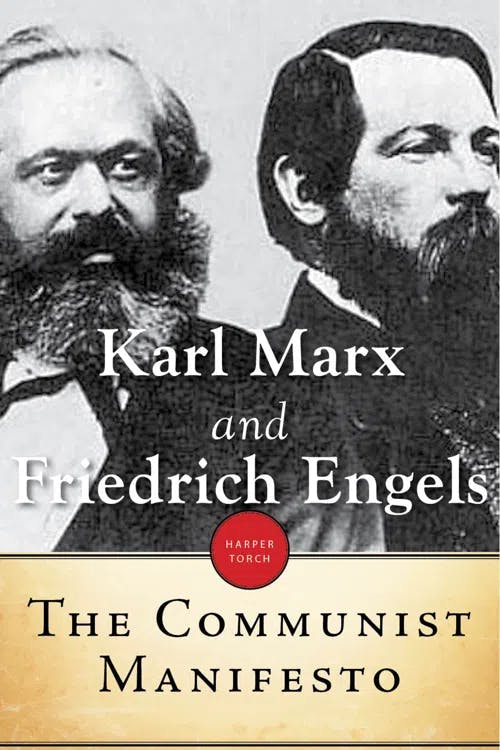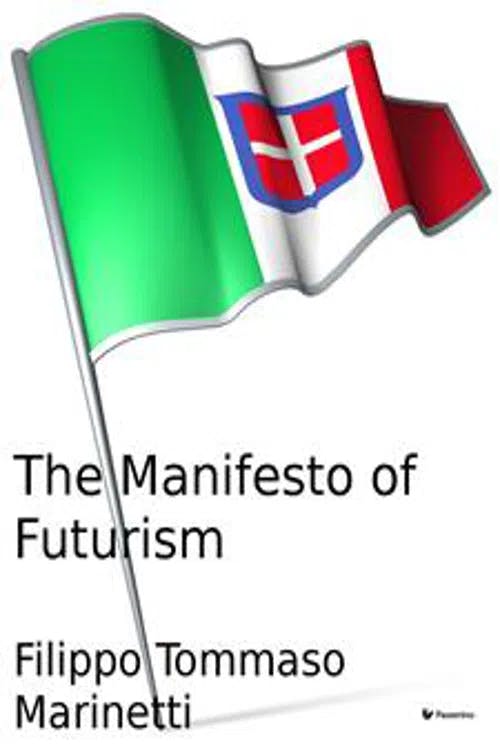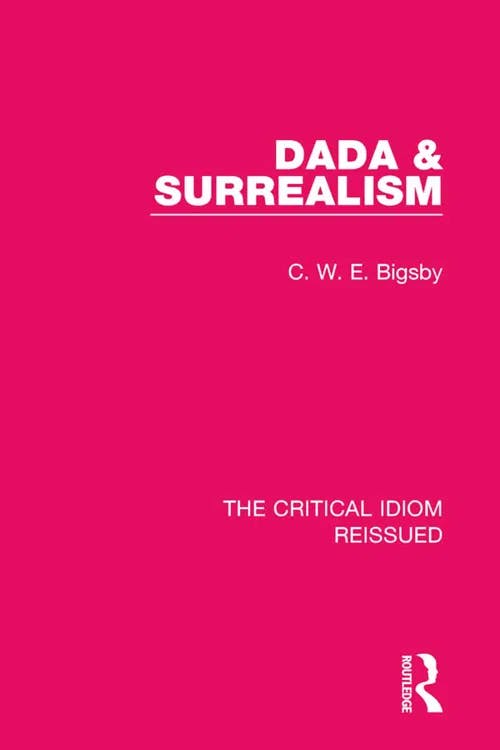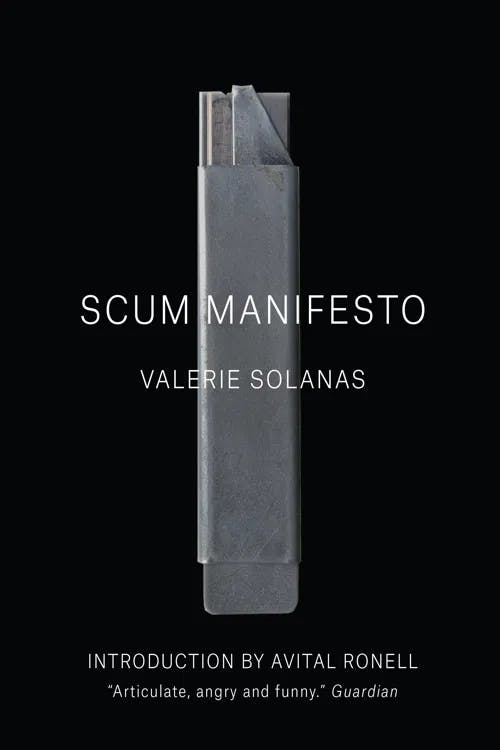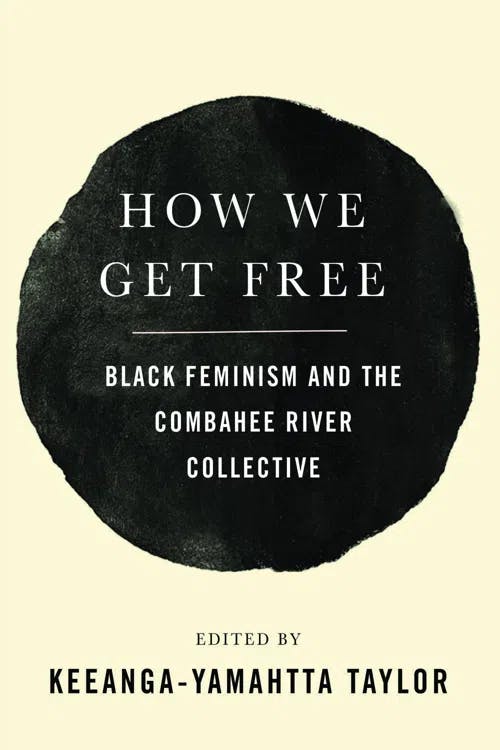What is a Manifesto?
MA, Sociology (Freie Universität Berlin)
Date Published: 05.10.2023,
Last Updated: 09.01.2024
Share this article
Defining the manifesto
A manifesto refers to a public declaration of core beliefs, intents, or defining characteristics of a particular group or movement. Manifestos typically open by presenting a critique of the status quo from which its authors present an alternative vision, followed by a call to action towards change. The term was first used in the English language in 1620 with reference to Paolo Sarpi’s History of the Council of Trent, wherein he called out the corruption of the Catholic Church in response to the Protestant Reformation. As John W. O'Malley writes,
The history of the council most easily consulted was Paolo Sarpi’s brilliant but thoroughly prejudiced Historia del Concilio Tridentino, 1619, which argued that Trent was a papal conspiracy to prevent reform. (2009)
John W. O'Malley
The history of the council most easily consulted was Paolo Sarpi’s brilliant but thoroughly prejudiced Historia del Concilio Tridentino, 1619, which argued that Trent was a papal conspiracy to prevent reform. (2009)
In the text, Sarpi refers to Trent as a "deformation, not reformation"(1620). This confrontational and bombastic style would come to characterize the genre of the manifesto. Indeed, even today the term “manifesto” evokes a polemical style of writing whose provocative and terse language is meant to cause a sensation on a widespread scale.
While you may be less familiar with Sarpi’s work, over the last centuries, manifestos have been used as a powerful tool by a number of different artistic, political, and even revolutionary causes. This study guide will walk you through some better-known examples of the manifesto — such as the highly influential Communist Manifesto (1848) of Karl Marx and Friedrich Engels, the proliferation of manifestos during the heyday of the Modernist avant-garde movement— and why their legacy and influence continues to give heft to the manifesto as a genre today.
The revolutionary appeal of The Communist Manifesto
The Communist Manifesto is undoubtedly the quintessential example associated with the genre, and its success in disseminating a revolutionary call to action would inspire, to some degree, many of the manifestos that would come after it. Written in the context of industrializing Europe, Marx and Engels' manifesto responded to the working-class struggle against capitalist exploitation and dire factory conditions.
The Communist Manifesto is the most widely read text by Marx and Engels, despite their extensive works also oriented around the critique of capitalism with the intent of awakening class consciousness among workers across Europe and beyond. (See Marx’s Das Kapital, 1867 or Engels’ The Origin of the Family, Private Property and the State, 1884.)
The popularity of The Communist Manifesto speaks to the virality of the manifesto’s bold and pithy style. In this case, the text is full of bold declarations and, crucially, it ends with a call to action, one that many of us have probably heard before:
The Communists disdain to conceal their views and aims. They openly declare that their ends can be attained only by the forcible overthrow of all existing social conditions. Let the ruling classes tremble at a Communistic revolution. The proletarians have nothing to lose but their chains. They have a world to win. WORKING MEN OF ALL COUNTRIES, UNITE! (Marx and Engels, [1848], 2014)
Karl Marx and Friedrich Engels
The Communists disdain to conceal their views and aims. They openly declare that their ends can be attained only by the forcible overthrow of all existing social conditions. Let the ruling classes tremble at a Communistic revolution. The proletarians have nothing to lose but their chains. They have a world to win. WORKING MEN OF ALL COUNTRIES, UNITE! (Marx and Engels, [1848], 2014)
Indeed, this kind of call to action has become a trademark element of the manifesto genre, and in this case, the call was heard around the world. The Communist Manifesto has been instrumental in the expansion and development of communist and socialist ideas and even played an inspirational role in the making of the Russian Revolution that would change the course of global history.
Thus, the manifesto can be an incredibly powerful tool in drawing support and influence around a cause, largely thanks to the punchy style and form associated with it. In turn, the effectiveness of The Communist Manifesto gives even greater weight to the term and the revolutionary potential associated with it. The sheer evocativeness surrounding the manifesto as a concept was something that later movements intentionally used to further their own artistic and political aims.
The manifesto and modernist artistic movements
The various modernist artistic and literary currents of the late 19th and 20th centuries also saw a proliferation of manifestos. The adoption of this form of writing sought to capture the revolutionary spirit and striking impact of The Communist Manifesto and apply it to their breakout, avant-garde styles and innovations. The avant-garde manifesto typically contained themes that marked breaking with cultural conventions and aesthetic traditions. It also served as a tool that gave cohesion to the artistic vision associated with its members. These manifestos were even works of art in themselves, as they were used as a space to showcase paintings, poetry, and prose as well as to evoke the mood of their corresponding movements.
Italian Futurism (1909)
One key example of the Modernist avant-garde manifesto can be found in Italian Futurism. Headed by strongman, Filippo Marinetti, he first published The Manifesto of Futurism in 1909. It quickly circulated in the Italian and French press, making it one of the most well-known artistic manifestos to this day. Its pages contained the main tenets of the Futurist movement, which centered on the radical embrace of the machine age. In order to get this message across, the manifesto is filled with controversial statements that sought to break with the idea of Italy as a place of archaic tradition and instead positioned it at the vanguard of technological progress and change. As Marinetti himself puts it,
It is from Italy that we launch throughout the world this violent and disruptive inflammatory manifesto of ours. With it, today, we establish Futurism, because we want to free this land from its stinking gangrene of professors, archaeologists, ciceroni and antiquarians. For too long has Italy been a dealer in second-hand clothes. We mean to free her from the numberless museums that cover her like so many graveyards. ([1909], 2016)
Filippo Tommaso Marinetti
It is from Italy that we launch throughout the world this violent and disruptive inflammatory manifesto of ours. With it, today, we establish Futurism, because we want to free this land from its stinking gangrene of professors, archaeologists, ciceroni and antiquarians. For too long has Italy been a dealer in second-hand clothes. We mean to free her from the numberless museums that cover her like so many graveyards. ([1909], 2016)
In this polemical excerpt, Marinetti is quite clear about the potential of the manifesto as a critique of the status quo and as a tool to launch his alternative vision predicated on the speed, technology, and virility he associated with the modern age of machines. In addition to gaining a lot of press attention thanks to its provocative style, this manifesto also inspired other movements such as the Vorticists who helped to bring a similar spirit to the English avant-garde via their own experimental manifesto, Blast.
Dadaism (1916)
Later in the period of the modernist avant-garde, Dadaism emerged in Zurich in the midst of the First World War. It is a movement largely defined by a sense of nihilism in response to the senseless horrors of the time, inflected with a comedic and absurdist twist. As C.W.E. Bigsby explains,
The [Dada] manifesto seemed to answer the public need for direct, polemical statement. Yet, perversely, it served merely to further the Dadaists’ aim of taunting the bourgeoisie. For while the public looked for a plain statement of intent, the bare bones of the latest artistic movement, they were caught in a web of words whose primary purpose was to demonstrate the redundancy of language. Nevertheless, though wildly and intentionally contradictory, these statements and manifestoes do serve at least obliquely to convey something of the tone and essence of Dada. (2017)
C. W. E. Bigsby
The [Dada] manifesto seemed to answer the public need for direct, polemical statement. Yet, perversely, it served merely to further the Dadaists’ aim of taunting the bourgeoisie. For while the public looked for a plain statement of intent, the bare bones of the latest artistic movement, they were caught in a web of words whose primary purpose was to demonstrate the redundancy of language. Nevertheless, though wildly and intentionally contradictory, these statements and manifestoes do serve at least obliquely to convey something of the tone and essence of Dada. (2017)
The Dada Manifesto was originally performed at the Cabaret Voltaire by its author, Hugo Ball, who opened by reciting a range of definitions of “Dada” in multiple different languages. Perhaps not surprisingly its reception was met with controversy, confusion, and curiosity — thus successfully cultivating the sense of chaos that the movement itself was intending to evoke through its artistic works.
Dadaism was something of an anti-movement whose nihilism and absurdism were expressed through many shades of irony and inversion with the primary aim of shocking their audience. Of their manifesto, prominent Dadaist figure, Tristan Tzara famously — and provocatively — stated in “Dada Manifesto” (1918),
To be against this manifesto is to be a Dadaist.… in principle I’m against manifestoes, as I am also against principle…. I write this manifesto to show that people can perform contrary actions together while taking a fresh gulp of air. (Quoted in Bigsby, 2017)
In typical modernist avant-garde fashion, the Dada manifesto took aim at art as an institution in its critique of the status quo. Rather, they were focused on capturing the entropy of existence rather than attempting to aestheticize it.
For more modernist avant-garde movements that utilized the manifesto, check out our study guides on Cubism and Surrealism.
Feminism and the political manifesto
The manifesto has long been instrumental in various currents of the feminist movement as a tool used to challenge the patriarchal status quo, articulate alternative visions, disseminate more widespread awareness around women’s rights, and mobilize others to join the cause. There have been a number of different feminist publications over the 19th and 20th centuries that employ traits of the manifesto, ranging from suffragette speeches to Betty Friedan’s The Feminine Mystique (1963), to feminist zines and viral internet commentary of the digital age. The following two examples illustrate the diverse range of different branches of feminism that have utilized the manifesto.
The SCUM Manifesto (1967)
One of the most striking and provocative examples of the feminist manifesto is Valerie Solanas’ SCUM Manifesto. It was highly controversial and dismissed at the time it was written due to the checkered character of its author who was perhaps even better known for shooting Andy Warhol — an incident that added to the publicity around her manifesto. Yet, it has since been taken as a seminal radical feminist text for its messaging, which highlights the subjugation of women and calls for the violent overthrow of the patriarchy under the banner of the “Society for Cutting Up Men.” In it, Solanas asserts that,
Life in this society being, at best, an utter bore and no aspect of society being at all relevant to women, there remains to civic-minded, responsible, thrill-seeking females only to overthrow the government, eliminate the money system, institute complete automation and destroy the male sex. (1967, [2016])
Valerie Solanas
Life in this society being, at best, an utter bore and no aspect of society being at all relevant to women, there remains to civic-minded, responsible, thrill-seeking females only to overthrow the government, eliminate the money system, institute complete automation and destroy the male sex. (1967, [2016])
Solanas uses terse and provocative language and tone to critique the current state of affairs, articulates an alternative vision for a society without men, and makes a call to action toward actualizing this vision.
The Combahee River Collective Statement (1977)
Meanwhile, the manifesto was also important in the establishment of the Combahee River Collective, a highly influential black feminist organization of African-American feminist, socialist and lesbian activists. In it, they powerfully highlight the intersections between race, gender, and class — one of the first texts to do so. As Keeanga-Yamahtta Taylor observes in her book on the Combahee River Collective,
The Combahee River Collective Statement stands tall among the many statements, manifestos, and other public declarations of the period for its clarity, rigor, and political reach[…] The CRC made two key observations in their use of “identity politics.” The first was that oppression on the basis of identity—whether it was racial, gender, class, or sexual orientation identity—was a source of political radicalization. Black women were not radicalizing over abstract issues of doctrine; they were radicalizing because of the ways that their multiple identities opened them up to overlapping oppression and exploitation. (2017)
Keeanga-Yamahtta Taylor
The Combahee River Collective Statement stands tall among the many statements, manifestos, and other public declarations of the period for its clarity, rigor, and political reach[…] The CRC made two key observations in their use of “identity politics.” The first was that oppression on the basis of identity—whether it was racial, gender, class, or sexual orientation identity—was a source of political radicalization. Black women were not radicalizing over abstract issues of doctrine; they were radicalizing because of the ways that their multiple identities opened them up to overlapping oppression and exploitation. (2017)
The Combahee River Collective Statement was a prolific text because it introduced new ways of thinking about gender in more diverse and nuanced ways. It also galvanized more women towards the cause of black feminism by elevating black women’s unique position to think and contribute to an intersectional analysis of womanhood. Moreover, it helped provide the basis for raising solidarity among feminists across a wider range of backgrounds and experiences.
The manifesto: legacy and influence
Manifestos are a powerful tool for articulating critiques of the status quo, developing a vision for an alternative world, and even inciting people to action in the name of that vision on a widespread scale. Over the last centuries, manifestos have been used in a variety of contexts ranging from the revolutionary call to action presented in The Communist Manifesto to the myriad modernist avant-garde movements at the turn of the century, in various currents of feminism, and beyond.
Today, even deploying the term “manifesto” adds more inflection to one’s message and vision thanks to the influence of those manifestos that have come before it. Manifestos continue to pervade in the realms of politics and activism and have even been appropriated in the spheres of business and marketing. Books and articles bearing the name of the manifesto abound — on topics ranging from hedonism and hacking to green marketing and investment to mental health and the politics of care. Indeed, the term continues to signify the groundbreaking and radical, enabling the viral sharing of powerful ideas that have succeeded in shocking people in the name of a cause.
Further reading on Perlego
Feminism for the 99%: A Manifesto (2019) by Cinzia Arruzza, Tithi Bhattacharya, and Nancy Fraser
The Communist Manifesto and Other Revolutionary Writings (2012) by Bob Blaisdell
Towards a New Manifesto (2011) by Max Horkheimer, Theodor Adorno, and Rodney Livingstone
Abolish the Family: A Manifesto for Care and Liberation (2022) by Sophie Lewis
Manifestos for World Thought (2017) by Lucian Stone and Jason Bahbak Mohaghegh
Feminist Manifestos (2018) by Penny A. Weiss
A Community Manifesto (2020) by Chris Wright
What is a manifesto in simple terms?
What is an example of a manifesto?
Who are the figures associated with the manifesto?
Bibliography
Bernstein, W. J. (2009). The Investor's Manifesto: Preparing for prosperity, armageddon, and everything in between. Wiley. Available at: https://www.perlego.com/book/1009312/the-investors-manifesto-preparing-for-prosperity-armageddon-and-everything-in-between-pdf
Bigsby, C.W.E. (2017) Dada and Surrealism. Routledge. Available at: https://www.perlego.com/book/1488997/dada-surrealism-pdf
Edwards, P. (2018) Blast: Vorticism, 1914–1918. Routledge. Available at: https://www.perlego.com/book/1500046/blast-vorticism-19141918-pdf
Engels, F. (2010) The Origin of the Family, Private Property and the State. Perlego. Available at: https://www.perlego.com/book/1820307/the-origin-of-the-family-private-property-and-the-state-pdf
Friedan, B. (1963) The Feminine Mystique. W. W. Norton.
Grant, J. (2009) The Green Marketing Manifesto. Wiley. Available at: https://www.perlego.com/book/1008497/the-green-marketing-manifesto-pdf
Marx, K. 2012 [1867]. Das Kapital: A Critique of Political Economy. Gateway Editions. Available at: https://www.perlego.com/book/784600/das-kapital-a-critique-of-political-economy-pdf
Kinderman, P. (2019) A Manifesto for Mental Health: Why we need a revolution in mental health care. Palgrave Macmillan. Available at: https://www.perlego.com/book/3494431/a-manifesto-for-mental-health-why-we-need-a-revolution-in-mental-health-care-pdf
Marinetti, F. (2016) The Manifesto of Futurism. Passerino. Available at: https://www.perlego.com/book/2099553/the-manifesto-of-futurism-pdf
Marx, K. and Engels, F. ( 2014) The Communist Manifesto. HarperTorch. Available at: https://www.perlego.com/book/602671/the-communist-manifesto-pdf
O'Malley, J,W. (2009) Trent and All That: Renaming Catholicism in the Early Modern Era. Harvard University Press. Available at: https://www.perlego.com/book/3289547/trent-and-all-that-renaming-catholicism-in-the-early-modern-era-pdf
Onfray, M. & McClellan, J. (2015) A Hedonist Manifesto: The power to exist. Columbia University Press. Available at: https://www.perlego.com/book/774280/a-hedonist-manifesto-the-power-to-exist-pdf
Pankhurst, E.S. (2013) The Suffragette Movement. Wharton Press. Available at: https://www.perlego.com/book/1383296/the-suffragette-movement-an-intimate-account-of-persons-and-ideals-with-an-introduction-by-dr-richard-pankhurst-pdf
Sarpi, P. (1676) History of the Council of Trent. Printed by J. Macock. Available at the British Library.
Solanas, V. (2016) SCUM Manifesto. Verso. Available at: https://www.perlego.com/book/731099/scum-manifesto-pdf
Taylor, K.Y. (2017) How We Get Free: Black feminism and the Combahee River Collective. Haymarket Books. Available at: https://www.perlego.com/book/566613/how-we-get-free-black-feminism-and-the-combahee-river-collective-pdf
The Care Collective. (2020) The Care Manifesto: The politics of interdependence. Verso. Available at: https://www.perlego.com/book/1692970/the-care-manifesto-the-politics-of-interdependence-pdf
Wark, M. (2004) A Hacker Manifesto. Harvard University Press. Available at: https://www.perlego.com/book/1812659/a-hacker-manifesto-pdf
MA, Sociology (Freie Universität Berlin)
Lily Cichanowicz has a master's degree in Sociology from Freie Universität Berlin and a dual bachelor's degree from Cornell University in Sociology and International Development. Her research interests include political economy, labor, and social movements. Her master's thesis focused on the labor shortages in the food service industry following the Covid-19 pandemic.

